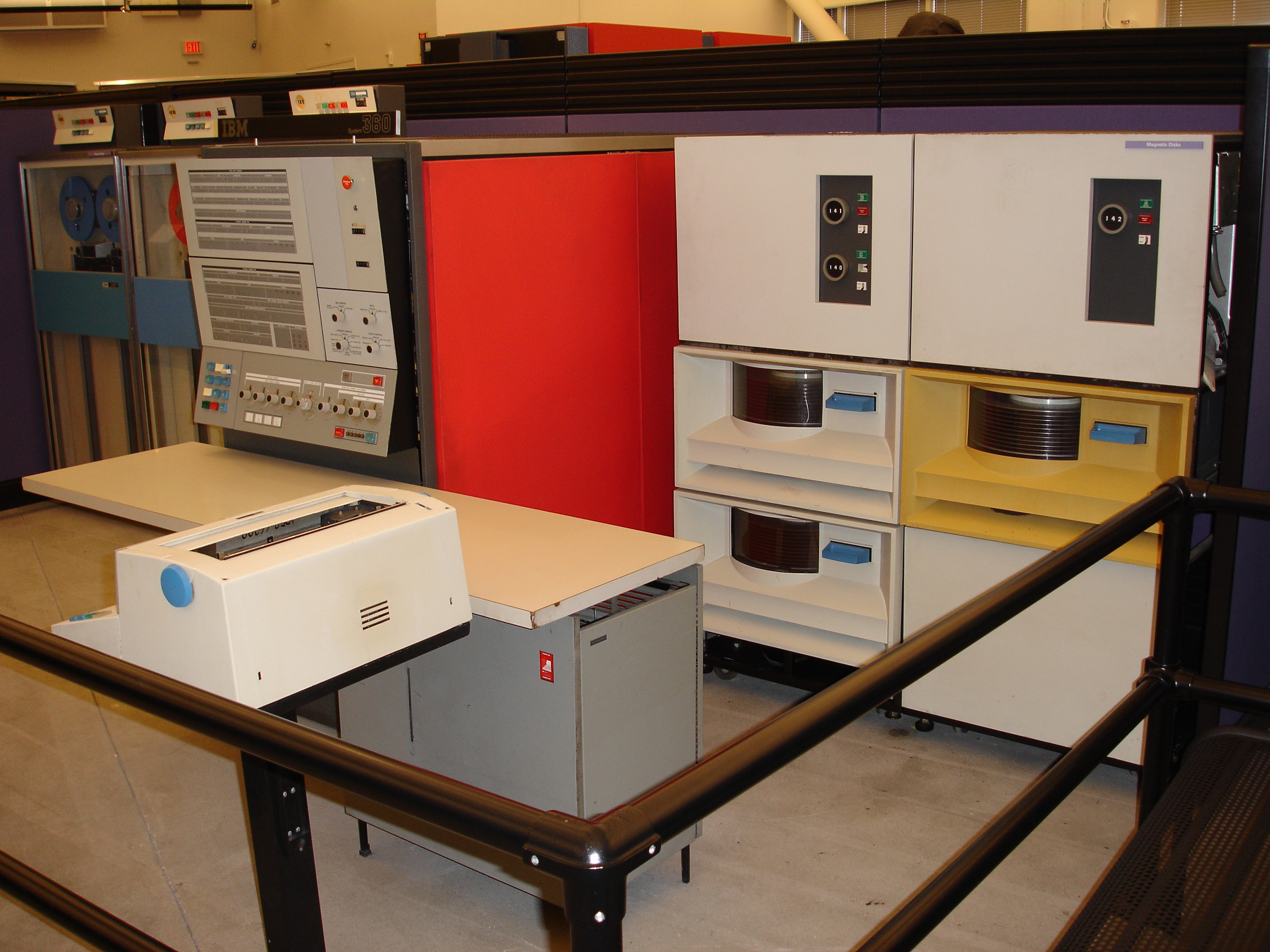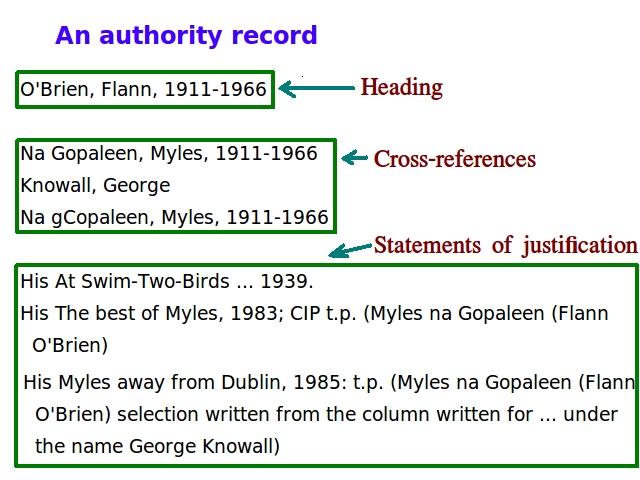|
NOTIS
NOTIS (Northwestern Online Total Integrated System) was a seminal integrated library system first created at Northwestern University, Evanston, IL USA in 1968. John P. McGowan, University Librarian from 1971 to 1992, recruited Professor James S. Aagaard to spearhead the project as lead programmer, and Velma Veneziano as systems analyst. The core of the original system was written in IBM 360 Assembler and ran on an IBM mainframe. The first module to go into production was Circulation on January 19, 1970; followed by the Technical Services module in October 1971. The system officially received its name NOTIS in May 1976. The first library outside of Northwestern University Library to implement NOTIS was the National Library of Venezuela in the Spring of 1979. By 1985 NOTIS integrated the public access catalog (OPAC), circulation, acquisitions, serials control, cataloging, authority control, and database management. Automatic fund accounting was also under development. All NOTIS modu ... [...More Info...] [...Related Items...] OR: [Wikipedia] [Google] [Baidu] |
Dynix (software)
The Dynix Automated Library System was a popular integrated library system, with a heyday from the mid-1980s to the late-1990s. It was used by libraries to replace the paper-based Library catalog, card catalog, and track lending of materials from the library to patrons. First developed in 1983, it eventually became the most popular Integrated library system, library automation software ever released, and was once near-ubiquitous in libraries boasting an Online public access catalog, electronic card catalog, peaking at over 5,000 installations worldwide in the late 1990s, with a market share of nearly 80%,Automation Systems Installed Counting by Library organizations. including the United States' Library of Congress. Typical of 1980s software technology, Dynix had a Text-based u ... [...More Info...] [...Related Items...] OR: [Wikipedia] [Google] [Baidu] |
Integrated Library System
An integrated library system (ILS), also known as a library management system (LMS), is an enterprise resource planning system for a library, used to track items owned, orders made, bills paid, and patrons who have borrowed. An ILS is usually made up of a relational database, software to interact with that database, and two graphical user interfaces (one for patrons, one for staff). Most ILSes separate software functions into discrete programs called modules, each of them integrated with a unified interface. Examples of modules might include: * acquisitions (ordering, receiving, and invoicing materials) * cataloging (classifying and indexing materials) * circulation (lending materials to patrons and receiving them back) * serials (tracking magazine, journals, and newspaper holdings) * online public access catalog or OPAC (public user interface) Each patron and item has a unique ID in the database that allows the ILS to track its activity. History Pre-computerization Prior ... [...More Info...] [...Related Items...] OR: [Wikipedia] [Google] [Baidu] |
Northwestern University
Northwestern University (NU) is a Private university, private research university in Evanston, Illinois, United States. Established in 1851 to serve the historic Northwest Territory, it is the oldest University charter, chartered university in Illinois. Chartered by the Illinois General Assembly in 1851, Northwestern was initially affiliated with the Methodist Episcopal Church but later became non-sectarian. By 1900, the university was the third-largest Higher education in the United States, university in the United States, after University of Michigan, Michigan and Harvard University, Harvard. Northwestern became a founding member of the Big Ten Conference in 1896 and joined the Association of American Universities in 1917. Northwestern is composed of eleven undergraduate, graduate, and professional schools in the fields of Kellogg School of Management, management, Pritzker School of Law, law, Medill School of Journalism, journalism, McCormick School of Engineering, enginee ... [...More Info...] [...Related Items...] OR: [Wikipedia] [Google] [Baidu] |
IBM System/360
The IBM System/360 (S/360) is a family of mainframe computer systems announced by IBM on April 7, 1964, and delivered between 1965 and 1978. System/360 was the first family of computers designed to cover both commercial and scientific applications and a complete range of applications from small to large. The design distinguished between architecture and implementation, allowing IBM to release a suite of compatible designs at different prices. All but the only partially compatible Model 44 and the most expensive systems use microcode to implement the instruction set, featuring 8-bit byte addressing and fixed-point binary, fixed-point decimal and hexadecimal floating-point calculations. The System/360 family introduced IBM's Solid Logic Technology (SLT), which packed more transistors onto a circuit card, allowing more powerful but smaller computers. System/360's chief architect was Gene Amdahl, and the project was managed by Fred Brooks, responsible to Chairman Thomas J. Wat ... [...More Info...] [...Related Items...] OR: [Wikipedia] [Google] [Baidu] |
IBM Mainframe
IBM mainframes are large computer systems produced by IBM since 1952. During the 1960s and 1970s, IBM dominated the computer market with the 7000 series and the later System/360, followed by the System/370. Current mainframe computers in IBM's line of business computers are developments of the basic design of the System/360. First and second generation From 1952 into the late 1960s, IBM manufactured and marketed several large computer models, known as the IBM 700/7000 series. The first-generation 700s were based on vacuum tubes, while the later, second-generation 7000s used transistors. These machines established IBM's dominance in electronic data processing ("EDP"). IBM had two model categories: one (701, 704, 709, 7030, 7090, 7094, 7040, 7044) for engineering and scientific use, and one (702, 705, 705-II, 705-III, 7080, 7070, 7072, 7074, 7010) for commercial or data processing use. The two categories, scientific and commercial, generally used common peripherals but had co ... [...More Info...] [...Related Items...] OR: [Wikipedia] [Google] [Baidu] |
Northwestern University Library
Northwestern University Libraries is the main academic library system of Northwestern University. Northwestern Libraries host a total of 8,198,268 printed or electronic volumes. In addition, its libraries contain 229,198 maps, 211,127 audio files, 103,377 printed journals, 196,716 electronic journals, 91,334 movies or videos, 36,989 manuscripts, 4.6 million microforms, and almost 99,000 periodicals. The University Library is the 14th-largest university library in North America based on total number of titles held. The building was designed in brutalist style by Walter Netsch of Skidmore, Owings & Merrill. Construction started in 1966 and the library opened in 1970. University Library succeeded Deering Library as the main library on campus and is connected to it. Along with the other institutions in the Committee on Institutional Cooperation, University Library joined the Google Book Search project on June 6, 2007.June 6, 2007 "Google Project Will Create Digital Repository f ... [...More Info...] [...Related Items...] OR: [Wikipedia] [Google] [Baidu] |
National Library Of Venezuela
The Biblioteca Nacional de Venezuela (in English language, English: ''National Library of Venezuela''), located in Caracas, is the legal deposit and copyright for Venezuela. It was established on July 13, 1833, by decree of General José Antonio Páez. Diego Bautista Urbaneja, a Minister of Foreign Affairs, was designated as the first director. The current headquarters of the library was designed by architect Tomás Sanabria from 1981 to 1989 in the style of Brutalist architecture#:~:text=Brutalist architecture is an architectural,structural elements over decorative design., Brutalist architecture, featuring a range of design elements and distinctive construction techniques. The library contains several special collections: * Automated Catalog * Orientation and Reference * CEDINBI (Library Information and Documentation Center) * General Bibliographic Collection (CBG) * Hemerographic Collection (CH) * Collection of Official Publications (CPO) * Old Documentary Collection (CDA) * ... [...More Info...] [...Related Items...] OR: [Wikipedia] [Google] [Baidu] |
OPAC
The online public access catalog (OPAC), now frequently synonymous with ''library catalog'', is an online database of materials held by a library or Library consortium, group of libraries. Online catalogs have largely replaced the analog card catalogs previously used in libraries. History Early online Although a handful of experimental systems existed as early as the 1960s, the first large-scale online catalogs were developed at Ohio State University in 1975 and the Dallas Public Library in 1978. These and other early online catalog systems tended to closely reflect the card catalogs that they were intended to replace. Using a dedicated Computer terminal, terminal or telnet client, users could search a handful of pre-coordinate indexes and browse the resulting display in much the same way they had previously navigated the card catalog. Throughout the 1980s, the number and sophistication of online catalogs grew. The first commercial systems appeared, and would by the end of ... [...More Info...] [...Related Items...] OR: [Wikipedia] [Google] [Baidu] |
Authority Control
In information science, authority control is a process that organizes information, for example in library catalogs, by using a single, distinct spelling of a name (heading) or an identifier (generally persistent and alphanumeric) for each topic or concept. The word ''authority'' in ''authority control'' derives from the idea that the names of people, places, things, and concepts are ''authorized,'' i.e., they are established in one particular form. Note: root words for both ''author'' and ''authority'' are words such as ''auctor'' or ''autor'' and ''autorite'' from the 13th century. These one-of-a-kind headings or identifiers are applied consistently throughout catalogs which make use of the respective authority file, and are applied for other methods of organizing data such as linkages and cross references. Each controlled entry is described in an authority ''record'' in terms of its scope and usage, and this organization helps the library staff maintain the catalog and make ... [...More Info...] [...Related Items...] OR: [Wikipedia] [Google] [Baidu] |
Bibliographic Record
A bibliographic record is an entry in a bibliographic index (or a library catalog) which represents and describes a specific resource. A bibliographic record contains the data elements necessary to help users identify and retrieve that resource, as well as additional supporting information, presented in a formalized bibliographic format. Additional information may support particular database functions such as search, or browse (e.g., by keywords), or may provide fuller presentation of the content item (e.g., the article's abstract). Bibliographic records are usually retrievable from bibliographic indexes (e.g., contemporary bibliographic databases) by author, title, index term, or keyword. Bibliographic records can also be referred to as ''surrogate records'' or metadata. Bibliographic records can represent a wide variety of published contents, including traditional paper, digitized, or born-digital publications. The process of creation, exchange, and preservation of bibliograph ... [...More Info...] [...Related Items...] OR: [Wikipedia] [Google] [Baidu] |
Association Of College And Research Libraries
The American Library Association (ALA) is a nonprofit organization based in the United States that promotes library, libraries and library education internationally. It is the oldest and largest library association in the world. History 19th century During the Centennial Exposition in Philadelphia in 1876, 103 librarians, 90 men, and 13 women, responded to a call for a "Convention of Librarians" to be held October 4–6, 1876, at the Historical Society of Pennsylvania. At the end of the meeting, according to Edward G. Holley in his essay "ALA at 100", "the register was passed around for all to sign who wished to become charter members", making October 6, 1876, the date of the ALA's founding. Among the 103 librarians in attendance were Justin Winsor (Boston Public Library and Harvard University), William Frederick Poole (Chicago Public Library and Newberry College), Charles Ammi Cutter (Boston Athenæum), Melvil Dewey, Charles Evans (librarian), Charles Evans (Indianapolis Pub ... [...More Info...] [...Related Items...] OR: [Wikipedia] [Google] [Baidu] |
Ameritech
AT&T Teleholdings, Inc., formerly known as Ameritech Corporation (and, before that, American Information Technologies Corporation), was an American telecommunications company that arose out of the 1984 AT&T divestiture. Ameritech was one of the seven Regional Bell Operating Company, Regional Bell Operating Companies created following the breakup of the Bell System. Ameritech was acquired in 1999 by SBC Communications, which subsequently acquired American Telephone & Telegraph, AT&T Corporation in 2006, becoming the present-day AT&T. Overview Ameritech was created as a holding company that owned five former Bell System companies in the Midwest. Under its umbrella were: * Illinois Bell Telephone Company * Indiana Bell Telephone Company, Inc. * Michigan Bell Telephone Company * Ohio Bell Telephone Company * Wisconsin Bell, Inc. For Ameritech's first nine years, it maintained these Bell brands inherited from the Bell System—though public displays of the Bell companies' names were ... [...More Info...] [...Related Items...] OR: [Wikipedia] [Google] [Baidu] |





